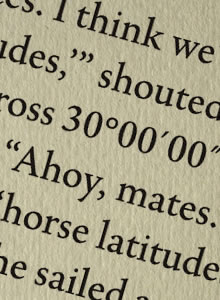Today’s post by originally appeared on his blog on October 25, 2015.
~ * ~
Book Design Basics: Quotation Marks and Primes
 Writers often ask about the difference between “straight” or “dumb” quotation marks and traditional printers’ quotes, commonly referred to as “smart quotes” or “curly quotes.” Add in the need to distinguish between left single quotes and apostrophes, and the primes used to specify feet and inches or minutes and seconds and you end up with a typographic conundrum that confounds many a capable author. This article examines the various types of quotes and primes and explains how to use them.
Writers often ask about the difference between “straight” or “dumb” quotation marks and traditional printers’ quotes, commonly referred to as “smart quotes” or “curly quotes.” Add in the need to distinguish between left single quotes and apostrophes, and the primes used to specify feet and inches or minutes and seconds and you end up with a typographic conundrum that confounds many a capable author. This article examines the various types of quotes and primes and explains how to use them.
Book Design Basics: Straight or Dumb Quotes
Straight quotes evolved to facilitate informal writing situations. When typing into a discussion forum, twitter feed, or comment box, use your apostrophe and double-quote keys for all the special characters (except the “degrees” symbol.) “Dumb” text editors don’t try to figure out which direction to slant your punctuation. “Dumb” writers don’t have to go to the “insert special characters” dialog box or remember special key sequences for each type of mark.
Consider the various punctuation styles needed to render the following example:

Straight quotes make it quick and easy to express a thought. You don’t have to be a typographer to make yourself understood. In the right situations, “dumb quotes” are a smart idea.
Read the full post on The Worlds Greatest Book.
